Larrin Thomas of Knife Steel Nerds: The ApexUltra Interview
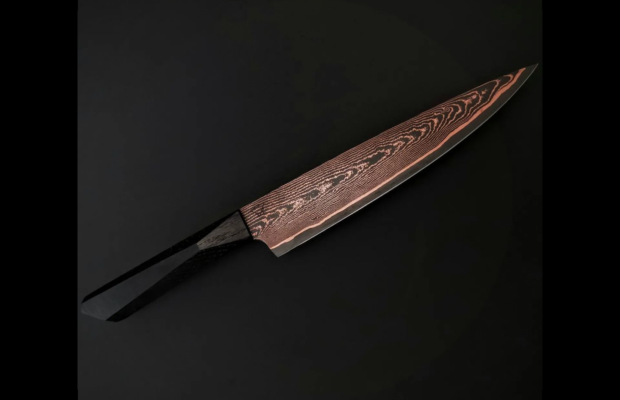
We’ve talked a lot about MagnaCut on KnifeNews, and for good reason. Since its 2021 debut, Larrin Thomas‘s debut knife steel has been attracting attention from enthusiasts, custom makers, and production companies alike. Now Thomas has rolled out his second new steel, a very different creation called ApexUltra.
Developed in partnership with knife makers Marco Guldimann and Tobias Hangler, ApexUltra is a high carbon steel aimed specifically at custom knives. According to Thomas, the result of their work is a non-stainless steel that is extremely tough and pure, with very high edge retention. There’s a lot of characteristically thorough information on ApexUltra over on Thomas’s site Knife Steel Nerds, in which it is compared to its fellow carbon steels including standbys like O1 and 1095 – and according to Thomas’s results, the jump in performance between such steel and ApexUltra is quite dramatic.
We recently conducted an email interview with Thomas about ApexUltra. As with our MagnaCut interview, we’re reproducing the interview in full below. Enjoy!
ApexUltra is a high carbon steel, which is not a genre that sees a lot of developmental action from the big steel companies. Do you think this is from a lack of interest, or simply the quality of the carbon steels that we do have?
Most low alloy tool steels in use today existed by 1930 or so, and many of those even earlier, like 52100 and O1 tool steels were released in 1905. I think part of what happened is that companies moved on to high alloy steels which were better suited to large batch heat treating because they can harden with a pressurized gas quench instead of oil. Crucible Steel developed CruForgeV for bladesmiths back in 2009 though it doesn’t seem to have been a roaring success as they haven’t made any since that original batch. Though that story is a bit more complicated (I have an article about this subject).
How does the formulation process for a high carbon steel differ from that of a stainless like MagnaCut?
They really don’t share that much in common as the design constraints are very different. With MagnaCut of course we had to add a lot of chromium to make it a stainless, and that high chromium content is a major factor for balancing any remaining elements. Though MagnaCut being a powder metallurgy steel means your microstructure remains pretty fine almost no matter how you design it.
Instead with ApexUltra we had to design a steel that would be easily forgeable in a bladesmith’s shop, and heat treatable using simple methods such as a forge and quench oil. Instead of relying on manufacturing technology to maintain a fine microstructure (powder metallurgy), the microstructure is controlled in part with design, and it just so happens that restricting the alloy additions in that way also maintains forgeability. Another difference with ApexUltra is that it was a partnership with knifemakers Tobias Hangler and Marco Guldimann and so we needed an approach that met the goals of the team rather than only myself. Tobias is also a metallurgist and Marco has previously made small batches of steel for his knifemaking so we all had common interests which made working together easy.
What are the core characteristics that you wanted ApexUltra to have?
The main design target of ApexUltra is that we create a forgeable steel with enhanced wear resistance vs. previously available forging steels while maintaining similar or better toughness. We also wanted it to be capable of very high hardness (66+ Rc) so that it can be used in very high performance knives with thin edges that need high “edge stability.” The number of high wear resistance forging steels is small and many of them have poor availability. For example, there is a steel called F2 (1.2562 in Europe) but its supply is very limited. Or Blue Super (also called Aogami Super) in Japan though the steel is very challenging to obtain in the USA. Or CruForgeV which I mentioned before has a finite supply. Blue Super and F2/1.2562 also have an issue with very poor toughness. With ApexUltra we have a significant increase in wear resistance vs. those previous steels I just mentioned (~50% better) without being more difficult to work with. And its toughness is also about 3x better than Blue Super and 1.2562.
ApexUltra is marketed as a product for handmade knives, but do you see any potential for it in the production knife realm – fixed blades or folders?
ApexUltra was designed with bladesmiths in mind, but yes it could also work well in production knives. There are customers out there that prefer the performance characteristics of low alloy “carbon steels” and those can be delivered by knifemakers or by production companies.
Anecdotally, carbon steels have a reputation for being simpler than modern stainless stuff. Obviously lots of care and attention went into the composition of ApexUltra. Do you think there is room in the carbon steel space for more advanced/modern metallurgical practices to make a difference? Is their reputation as “old-fashioned” or “simple” an artificial restriction?
With the production of ApexUltra we used a steelmaking technique called “Electroslag Remelting” (ESR) which gives higher purity to the steel, keeps down the segregation of elements, and makes the cast microstructure finer, resulting in more consistent steel. So despite the relatively low-tech steel design the production of the steel was pretty advanced. But the specific combination of elements with chromium, tungsten, and vanadium are the reason that ApexUltra outperforms those previous steels like 1.2562 and Blue Super. With low alloy steels, relatively small changes can lead to very sizable property differences and that is where the steel design expertise comes in.
The main distinguishing feature of a “high alloy” steel is that it has at least 4% chromium, and adding that much chromium doesn’t necessarily make the steel better, just that it can be air hardened. In the 1940s they tried releasing air hardening steels that were designed with increased manganese instead of chromium so that they would be “easy” to heat treat using simple methods like a forge. Ultimately those steels weren’t very successful but it is an example of how different niche designs could be made if there were enough people to buy it.
Another area where we used the latest knowledge and technology was in the development of the heat treatment procedure for ApexUltra. We did a pretty wide range of experiments to come up with optimum procedures for different scenarios: heat treating in a forge, in a furnace, stock removal heat treating, etc. I’m very proud of how optimized the recommendations are. I have an article with all of the findings, including specific recommendations, and those will be reflected in an updated datasheet soon.
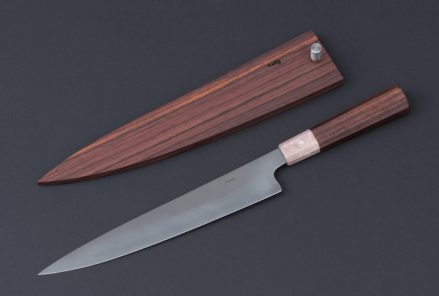
You were first contacted by Marco and Tobias in March 2021 – that seems like a pretty tight time frame to formulate and test a new steel. What did that development process look like? How many “drafts” of steel did it take, etc.?
Marco and Tobias had a handful of compositions that they wanted me to analyze and tell them my thoughts on whether one of the approaches would meet their design goals. I told them I had a design that I thought would work well but I had not seriously pursued it because 1) small batch steel production is relatively expensive and 2) bladesmiths who forge knives are typically very cost conscious when it comes to steel because of how cheap they can procure the common basic alloys. The real time commitment was getting the laboratory melt of the steel produced (around 50 lbs) and then fully tested to ensure the design worked as intended before moving to full production. Tobias and Marco worked their connections and got the lab steel made, forged out, and heat treated for testing in record time. I was able to run the steel through my standard tests which immediately gave us a huge database of prior properties to compare against and saw that the steel was indeed very tantalizing. Then the even harder job of getting steel made in a reasonable time with larger production companies that have their own timelines and production schedules. I agree that the time between conception and delivery of the first product was impressively short.
When we talked about MagnaCut last year, production was just ramping up; now it seems quite prevalent. What is the availability for ApexUltra expected to be like over the next 6-12 months?
It is difficult to compare MagnaCut and ApexUltra because with MagnaCut I developed the product for the steel companies producing it, while with ApexUltra the work is contracted out to high quality steel manufacturers. ApexUltra has been very popular with its initial production and most of it is already sold out. We are getting more ready to sell as soon as we can. ApexUltra has its own website where you can find links to the suppliers, among other information. There is also an Instagram page if you want to make sure you find out about a new batch right away.
Do you have any more steel projects in the works that you can tell us about?
I don’t have anything to announce at this point. We should give the knife companies and bladesmiths some time to get knives out before giving them yet another steel to use. I’m happy that ApexUltra and MagnaCut are such different products, both to show the range of steel design I can do but also because they don’t really compete with each other. Hopefully my next big project will also fill its own niche.
Knife in Featured Image: Tobias Hangler Chef Knife with copper damascus cladding and ApexUltra core
The information provided by KnifeNews.com (the “Site”) is for general recreational purposes only. The views and opinions expressed on the Site are those of the author or those quoted and do not necessarily reflect the views of any entities they represent. All information on the Site is provided in good faith, however, we make no representation or warranty of any kind, express or implied, regarding the accuracy, adequacy, validity, reliability, availability, or completeness of the information on the Site. Under no circumstance shall we have any liability to you for any loss or damage as the result of the use of the Site or reliance on any information provided. Your use of the Site and your reliance on any information on the Site is solely at your own risk.


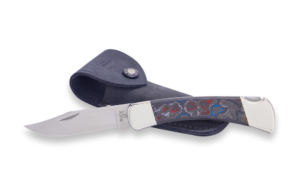
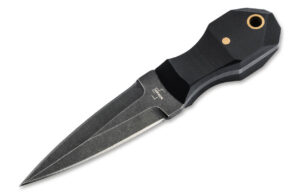
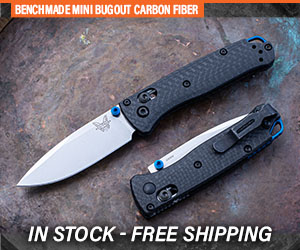





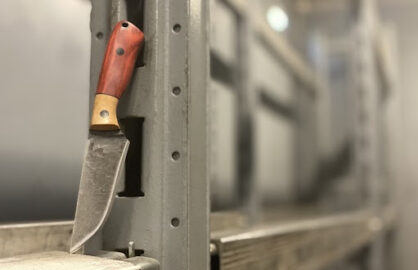


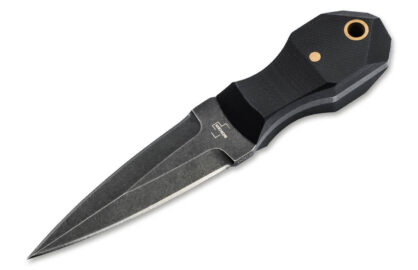

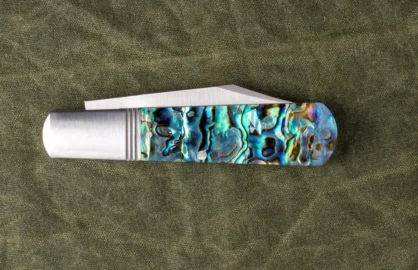


0 comments